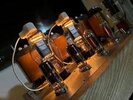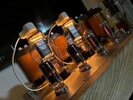During my explorations into the world of low-power Single Ended Triode amplifiers and Directly Heated Triode preamplifiers I have been focused on American and European builders such as Radu Tarta, James Burgess, Thomas Mayer, Dr. Burkhardt Schwäbe, Oliver Sayes, Sean Casper, Jose Martins, Graham Tricker, Matt Kamna, Andy Grove, Will Vincent, Nick Bavera and others. I have been curious how their modern builds compare to the traditional designs and builds from Japan that often serve as inspirations.
Being the way that I am, I wanted to avoid the more mainstream brands like Wavac, Kondo, Shindo, Yamamoto, Air Tight, Audio Tekne, Miyajima and the likes, and instead focus on the “underground” or lesser known, at least to the western world, designers and builders.
Owning five different 45’s and 46’s SET amps, at least 3 sets 300B’s and 2A3’s, a pair of AD1’s, a 10Y/VT-25/801A, a 211 and a 845 SET and four different SET OTL amps, I wanted to explore different circuit topologies and different tubes, not mainstream.
So here is where I have landed and the Japanese boutique amps that I’m currently experiencing and enjoying:
Tatsuhiro Miyanaga
809 SET amplifier




Isamu Asano
45 Loftin-White SET amplifier
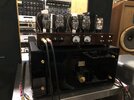

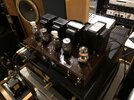
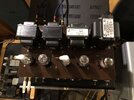
Tadaatsu Atarashi
45 Push-Pull monoblocks amplifiers
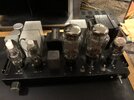


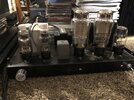

Toshiaki Kurashima
PX4 SET amplifier


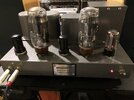

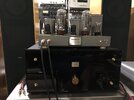
These Japanese greats are artisans that offer a different flavor. I’m like a Cheshire Cat with a smile on my face, enjoying life:
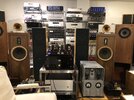
Being the way that I am, I wanted to avoid the more mainstream brands like Wavac, Kondo, Shindo, Yamamoto, Air Tight, Audio Tekne, Miyajima and the likes, and instead focus on the “underground” or lesser known, at least to the western world, designers and builders.
Owning five different 45’s and 46’s SET amps, at least 3 sets 300B’s and 2A3’s, a pair of AD1’s, a 10Y/VT-25/801A, a 211 and a 845 SET and four different SET OTL amps, I wanted to explore different circuit topologies and different tubes, not mainstream.
So here is where I have landed and the Japanese boutique amps that I’m currently experiencing and enjoying:
Tatsuhiro Miyanaga
809 SET amplifier




Isamu Asano
45 Loftin-White SET amplifier




Tadaatsu Atarashi
45 Push-Pull monoblocks amplifiers





Toshiaki Kurashima
PX4 SET amplifier





These Japanese greats are artisans that offer a different flavor. I’m like a Cheshire Cat with a smile on my face, enjoying life:

Attachments
Last edited:

